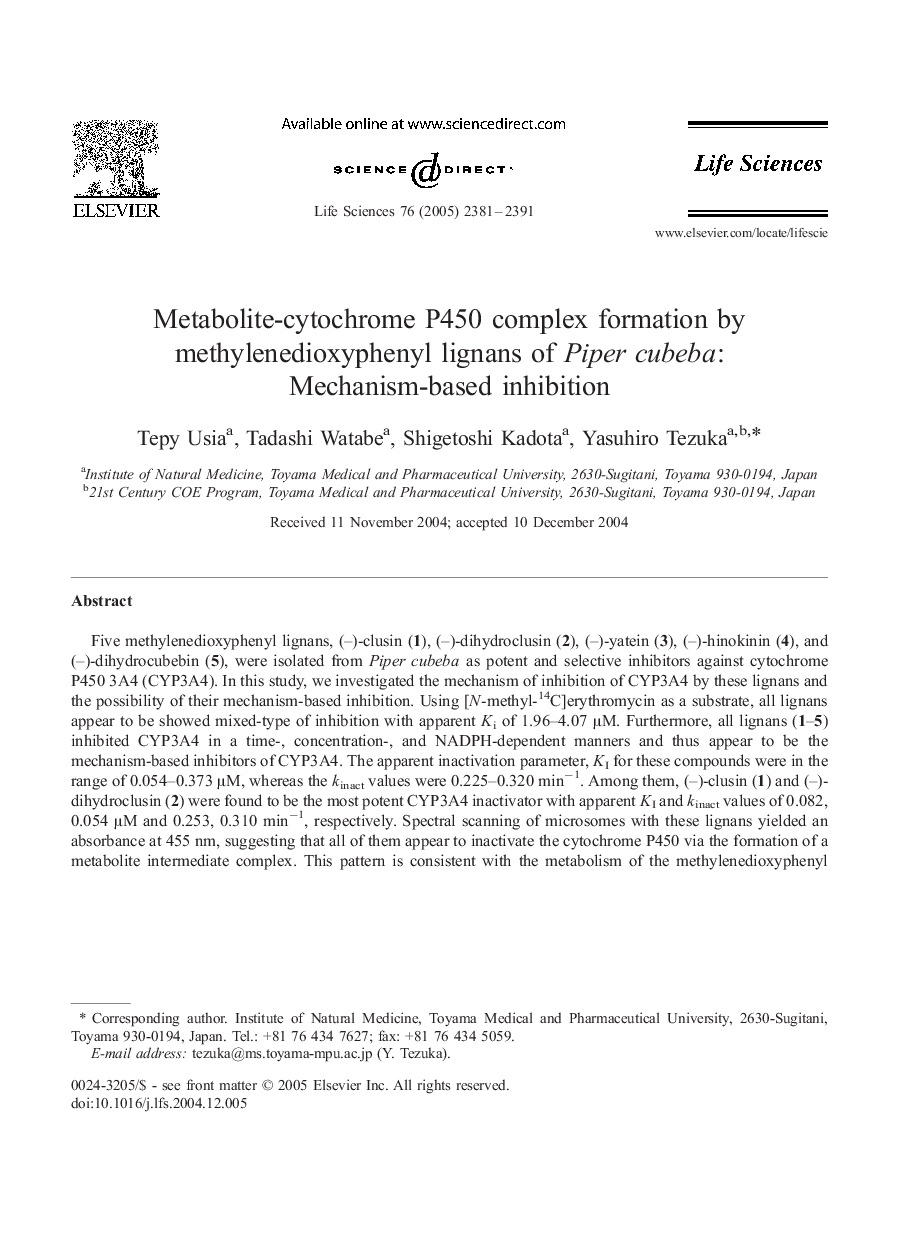| Article ID | Journal | Published Year | Pages | File Type |
|---|---|---|---|---|
| 2553844 | Life Sciences | 2005 | 11 Pages |
Five methylenedioxyphenyl lignans, (–)-clusin (1), (–)-dihydroclusin (2), (–)-yatein (3), (–)-hinokinin (4), and (–)-dihydrocubebin (5), were isolated from Piper cubeba as potent and selective inhibitors against cytochrome P450 3A4 (CYP3A4). In this study, we investigated the mechanism of inhibition of CYP3A4 by these lignans and the possibility of their mechanism-based inhibition. Using [N-methyl-14C]erythromycin as a substrate, all lignans appear to be showed mixed-type of inhibition with apparent Ki of 1.96–4.07 μM. Furthermore, all lignans (1–5) inhibited CYP3A4 in a time-, concentration-, and NADPH-dependent manners and thus appear to be the mechanism-based inhibitors of CYP3A4. The apparent inactivation parameter, KI for these compounds were in the range of 0.054–0.373 μM, whereas the kinact values were 0.225–0.320 min−1. Among them, (–)-clusin (1) and (–)-dihydroclusin (2) were found to be the most potent CYP3A4 inactivator with apparent KI and kinact values of 0.082, 0.054 μM and 0.253, 0.310 min−1, respectively. Spectral scanning of microsomes with these lignans yielded an absorbance at 455 nm, suggesting that all of them appear to inactivate the cytochrome P450 via the formation of a metabolite intermediate complex. This pattern is consistent with the metabolism of the methylenedioxyphenyl compounds. These results indicate that (–)-clusin (1), (–)-dihydroclusin (2), (–)-yatein (3), (–)-hinokinin (4), and (–)-dihydrocubebin (5) are effective mechanism-based inhibitors of CYP3A4.
